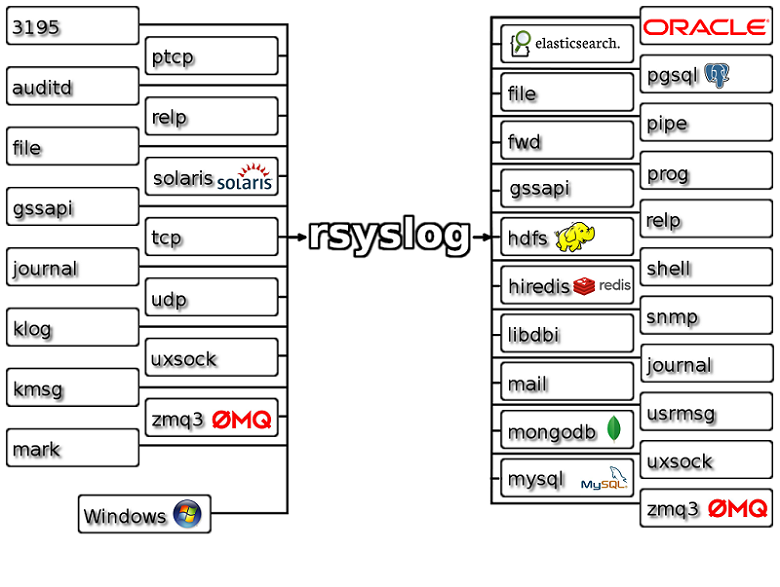

For more information about preparing a seccomp profile, see Docker Security Profile. The profile is referenced in the docker run command when you create the Conjur container.

A seccomp profile helps to enforce least privilege principles within Conjur. In production environments, we recommend that you harden your Conjur configuration by using a seccomp profile. The output shows the repository and tag that you will use when creating your containers. Substitute the actual image name in the following command. Recommended: If your organization has a local Docker registry, push the Conjur Server image to that registry. Load the Conjur container image into the Docker Engine. For more information, see Verify Signed Conjur Artifacts.
#DOCKER SYSLOG NG START ARCHIVE#
We strongly recommend verifying archive signatures before installing them in your environment. You can now load the Conjur image.Īll Conjur artifacts are cryptographically signed archives. The platform is installed and runs, and a message including "hello world" is displayed. To ensure the container platform is correctly installed and running, open a terminal application and run the following command: Enterprise edition (required for FIPS compliance): See Docker Enterprise Edition on RHEL 8.x.Community edition: See Docker Engine for your platform.
#DOCKER SYSLOG NG START INSTALL#
These root privileges are needed for spawning each process using its respective user.įor Conjur Server system requirements, see System Requirements for Conjur Server.ĭownload and install platform software: Platform The Conjur container isolates each one of its components (for example, Conjur, NGINX, PostgresSQL, and syslog-ng) by running them as separate processes delegated to dedicated Linux users. The user running the Conjur container must have root privileges. For high availability, each Master and Standby container should run on a separate VM. You can install the Conjur container image on Docker.Ī Conjur Server is packaged as a container image. $ touch /opt/cyberark/dap/config/conjur.yml

To prepare for this, create an empty file in /opt/cyberark/dap/config by running: We strongly recommend maintaining this file outside of the Docker container. The file is created in the /etc/conjur/config directory inside the container, if one isn't already there when you define nodes using the evoke configure command. Step 3: Recommended: Copy Conjur configuration fileĬonjur provides a configuration file conjur.yml to hold system settings. To create the above folders, run the following command: Provides direct access to the Conjur logs locally Simplifies transferring seed files into the Conjur container Location for the Docker seccomp.json fileĪllows backups to be available on the host server These folders simplify the process of getting configuration data into the container as well as getting data out of the container for audit, backups, and more.

If you are mounting volumes, we recommend that you first create the following folders to be mounted by the Conjur container. Note: This specific port is not required by Conjur. The following ports need to be open from the Layer 4 or Layer 7 load balancer in front of the Follower hosts: Using syslog-ng, audit events are streamed from the Follower to the Master TLS endpoint for Conjur UI and API Access Required for data replication from the Master to Standbys and Followers The following ports need to be open and accessible from the Layer 4 load balancer in front of the Conjur Master/Standby nodes: From Step 1: Open portsĬonjur requires a number of ports be available for node-to-node communication. This topic describes the steps needed to prepare and set up your provisioned VMs before deploying Conjur. Provisioned VMs require some additional setup before a Conjur container can be deployed and configured. Prepare VMs for Conjur deployment and configuration For more details and an example, see Docker Security Profile. Store keys in the host system kernel keyring.įor more information about the docker run command, see Start the Conjur container.Īdditionally, if a seccomp file is provided when starting the Conjur server container, it must include special provisions for keyring access. Mount container volumes in the file system, as configured in the docker run command. Network access through the ports configured in the docker run command. The Conjur server Docker container must be allowed to use the following resources of the host operating system: Prepare AWS image for Conjur deployment and configuration Prepare Conjur Environment for Docker Deploymentīefore you begin your Conjur deployment and configuration, you need to prepare your Conjur environment:


 0 kommentar(er)
0 kommentar(er)
